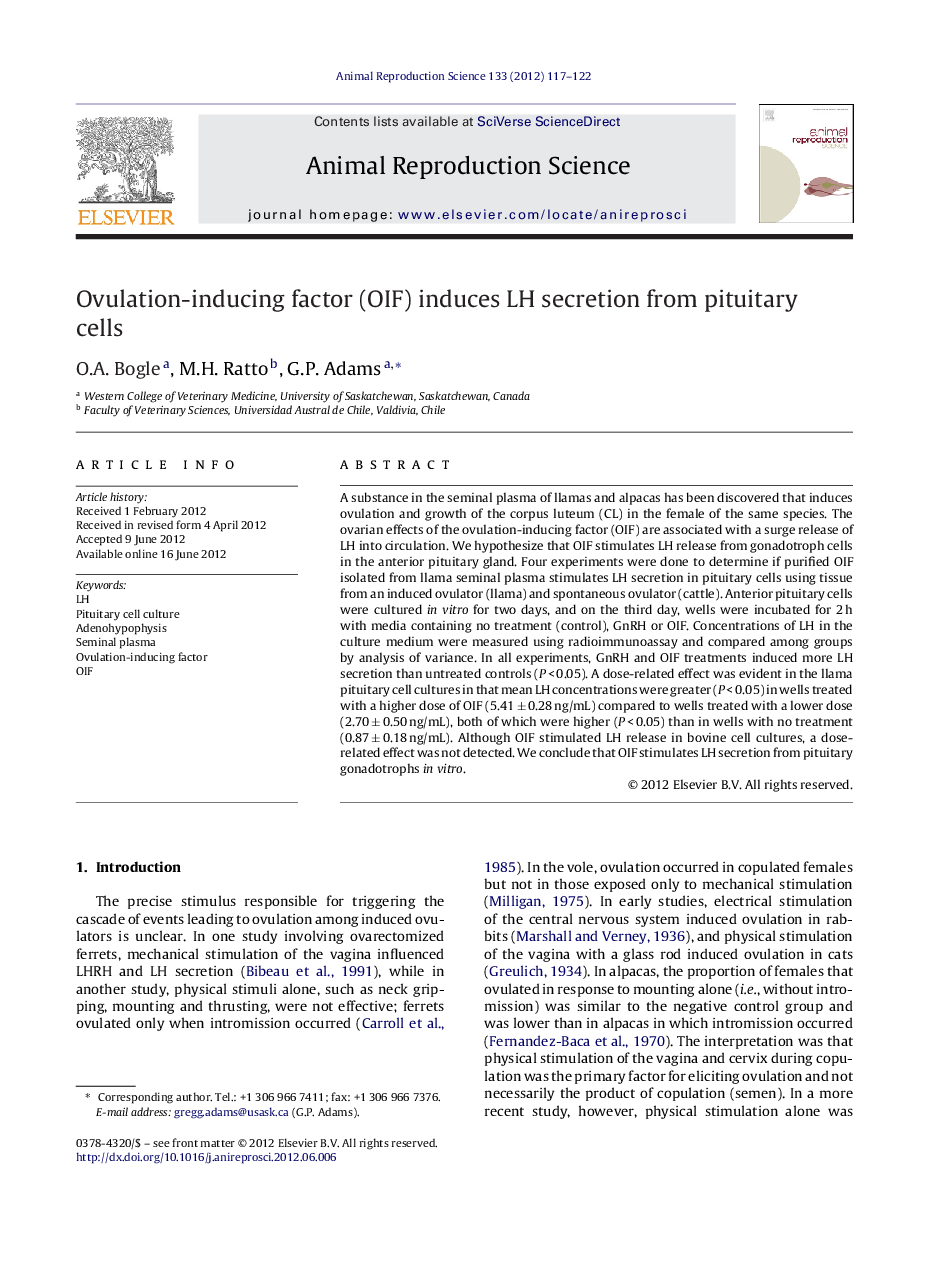| Article ID | Journal | Published Year | Pages | File Type |
|---|---|---|---|---|
| 2073156 | Animal Reproduction Science | 2012 | 6 Pages |
A substance in the seminal plasma of llamas and alpacas has been discovered that induces ovulation and growth of the corpus luteum (CL) in the female of the same species. The ovarian effects of the ovulation-inducing factor (OIF) are associated with a surge release of LH into circulation. We hypothesize that OIF stimulates LH release from gonadotroph cells in the anterior pituitary gland. Four experiments were done to determine if purified OIF isolated from llama seminal plasma stimulates LH secretion in pituitary cells using tissue from an induced ovulator (llama) and spontaneous ovulator (cattle). Anterior pituitary cells were cultured in vitro for two days, and on the third day, wells were incubated for 2 h with media containing no treatment (control), GnRH or OIF. Concentrations of LH in the culture medium were measured using radioimmunoassay and compared among groups by analysis of variance. In all experiments, GnRH and OIF treatments induced more LH secretion than untreated controls (P < 0.05). A dose-related effect was evident in the llama pituitary cell cultures in that mean LH concentrations were greater (P < 0.05) in wells treated with a higher dose of OIF (5.41 ± 0.28 ng/mL) compared to wells treated with a lower dose (2.70 ± 0.50 ng/mL), both of which were higher (P < 0.05) than in wells with no treatment (0.87 ± 0.18 ng/mL). Although OIF stimulated LH release in bovine cell cultures, a dose-related effect was not detected. We conclude that OIF stimulates LH secretion from pituitary gonadotrophs in vitro.
